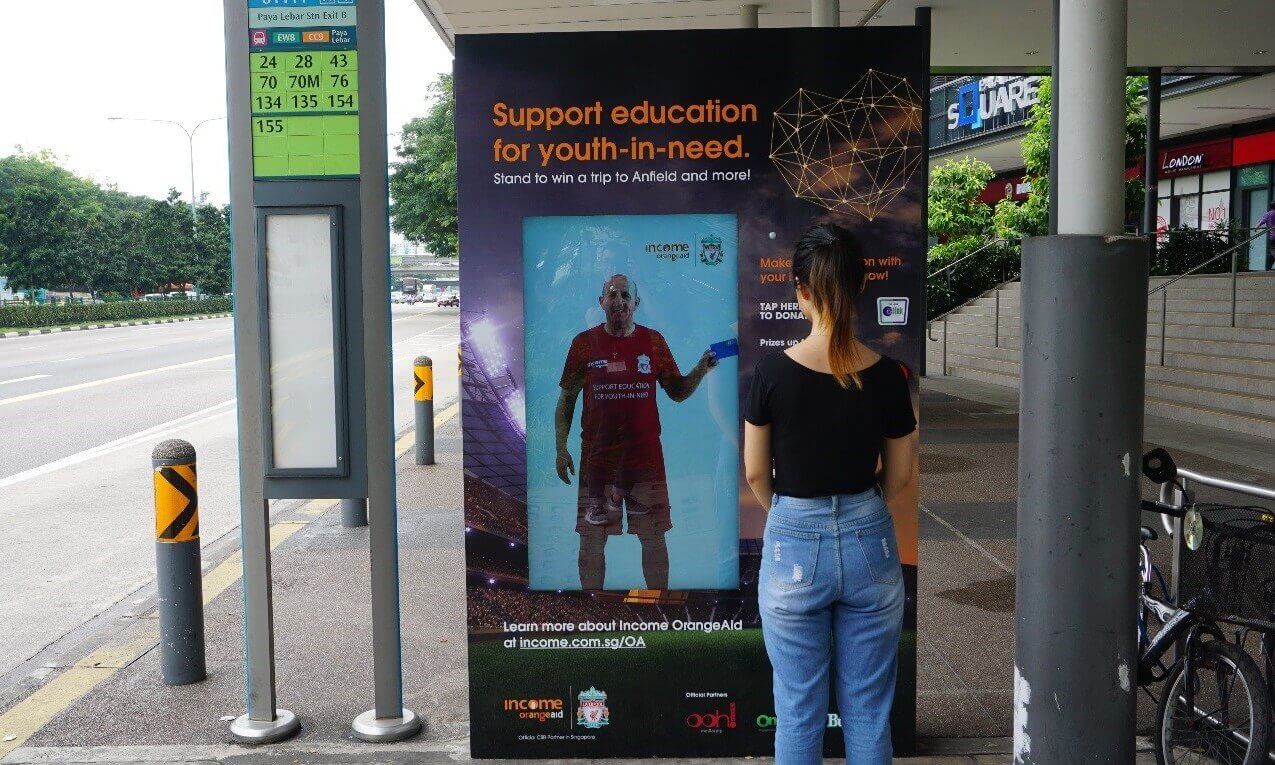People these days spend more time outside their homes. Moreover, the attention span of on-lookers is decreasing tremendously. Keeping that in mind, advertising has undergone a change which is focused to draw more on-lookers. In the recent years, there has been a rise in interactive out of home (OOH) advertising campaigns all over the world and an increasing number of big entertainment and retail advertisers keen on implementing its usage. Inventive ideas for national campaigns in major retail center’s have produced experiences that have been shared and increased via social media.
They’ve ranged from touch-screen and gesture control gaming, photo booths, on-screen questionnaires, tap and pay donations, downloadable information and calendar updates, even fortune-telling.
- Simple and clear outcome – Make sure that the concept and user experience is as simple as possible yet engaging and leading to ideally one outcome. Don’t try to force users to jump through a maze of steps with your brand. We’ve found the more simple a concept is, the higher the engagement rate and the larger the percentage completed.
- Design for your audience and environment – Diverse target audiences and the environment of the screens require different design considerations. Consider accessibility, language, height, the audiences’ frame of mind and their dwell time. Instructions should be at the user’s eye-height, while adults’ input should be between their neck and chest height. It is also important to make sure that the foreground and background colors contrast.
- Call to action – Creative should look attractive, fun and alluring to encourage engagement. A button is definitely required. A button lets people know it’s interactive. It needs to be large and easy to press quickly. An animated screen will attract shoppers’ attention and entice users to interact.
- User experience – It is important that the users enjoy, and find it intuitive to interact with the advertising, so expert app design is a must. Bright, vivid colors should be used to draw attention to anything the user needs to find quickly. In attention short economy, people prefer to read short lines of content.
- Analytics – Make sure it’s clear what customer information the advertiser wants to collect. Capturing personal information such as phone numbers or email addresses is possible if legal considerations are designed into the app. In addition, brands can use this platform to measure engagement as part of their border campaign metrics.
- Audio – Generally interactive Retail Digital out of home (OOH) advertising will support audio once the user starts, though it’s not permitted to attract people to the screen. Sound effects are best used to provide users with feedback that they are successfully interacting. Given OOH environments are busy and loud, voiceovers should be supplemented with subtitles.
- Optimisation – The app that goes live on day one won’t necessarily be the one that is used for the rest of the campaign. Based on feedback and analytics, the app should be continually improved and optimized until the campaign ends. During pre-production interactive digital out of home (OOH) advertising app builds will commonly have a lot of iterations and overall can take several weeks to develop.
- Network scale and hardware – Traditionally interactive DOOH campaign was confined to a couple of panels but improvements in technology and networks mean interactive can now provide national scale. Choose a network that has the capability to bring the concept to life. Consider the quality of the hardware, flexibility of the peripherals, capability to update and monitor remotely to ensure the campaign runs smoothly. Certain places such as where people can walk by and standby should also be considered.




